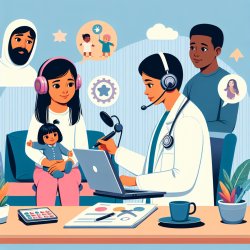The realm of speech-language pathology is continually evolving, and the incorporation of data-driven decisions has never been more critical. For practitioners dedicated to creating outstanding outcomes for children, leveraging research is paramount. TinyEYE, a leading provider of online therapy services to schools, is committed to utilizing cutting-edge research to enhance therapy outcomes. One such research that holds significant promise is from the 2014 ACMT Annual Scientific Meeting, which explored various toxicological findings.
Research Insights: Antivenom Efficacy Beyond Expiry Dates
One of the key studies presented at the 2014 ACMT Annual Scientific Meeting examined the efficacy of expired antivenoms. Traditionally, antivenoms are believed to have limited shelf lives. However, the study titled "Snake Venom Binding Activity of Expired Antivenoms" by Rentmeester et al. challenges this notion, revealing that antivenoms can retain their efficacy well beyond their expiration dates.
Key Findings:
- Faboterapico Polivalente Antivipmyn Tri: Antivenoms with expiration dates of 1/00, 3/09, and 10/10 retained 95%, 68%, and 73% efficacy against Bothrops jararaca venom, respectively.
- Soro Antibotiopico Laquetico: Demonstrated 141% efficacy relative to unexpired control, even 14 years post-expiration.
- SAIMR Polyvalent Antivenoms: Showed binding rates of 81% to 106% against Naja naja venom, even 9 years after expiration.
Implementing Research in Practice
For practitioners in the field of speech-language pathology, this research underscores the importance of not discarding valuable resources prematurely. While this study is focused on antivenoms, the principle can be extended to other therapeutic tools and materials. Here’s how practitioners can implement these insights:
1. Evaluate Current Resources:
- Regularly review and assess the efficacy of therapy materials and tools.
- Consider extending the use of materials that continue to show positive outcomes beyond their suggested shelf life.
2. Incorporate Data-Driven Decisions:
- Use empirical data to guide therapy practices and material usage.
- Ensure that decisions are backed by robust research to maximize therapy effectiveness.
3. Encourage Further Research:
- Stay abreast of the latest research and developments in the field.
- Encourage collaboration and research within the therapy community to continuously improve therapy outcomes.
Benefits for Children’s Therapy
By adopting a research-oriented approach, practitioners can ensure that therapy for children is both effective and efficient. The study on antivenoms highlights the potential of re-evaluating resources, leading to:
- Cost Savings: Prolonging the use of effective materials can reduce costs.
- Enhanced Outcomes: Data-driven decisions can lead to more targeted and successful therapy interventions.
- Resource Optimization: Ensuring that valuable resources are not wasted can enhance the overall therapy experience.
Conclusion
The insights from the 2014 ACMT Annual Scientific Meeting provide a compelling case for the continuous evaluation and utilization of therapy materials. For practitioners at TinyEYE and beyond, leveraging such research can lead to significant improvements in therapy outcomes for children.
To read the original research paper, please follow this link: 2014 ACMT Annual Scientific Meeting—March 28–30, 2014 Phoenix, AZ, USA.










